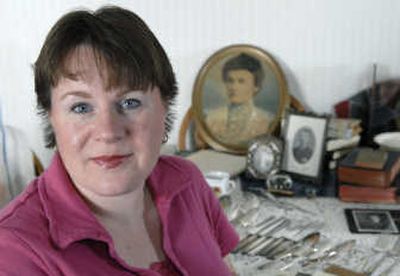Discovering family history

For most of us, Thanksgiving is more than turkey and trimmings. It’s the time of year when family, and family traditions, are celebrated.
But to genealogists, and genealogy enthusiasts, family is celebrated every day.
For Miriam Midkiff, genealogy is more than just learning the names of her ancestors. It’s a glimpse into the lives of her family’s past.
“(It’s) what we (genealogists) call ‘flesh on the bones,’ as far as finding those stories,” says Midkiff. “Because anyone can look up names and dates and places, but it’s really about the stories and finding out why people did what they did, and how the history of the area affected them. Because they were people like you and me, not just a name and a date on a chart.”
Midkiff began her genealogical research at 20, a young age to start a hobby that often doesn’t interest people until later in life. But she had listened to family stories as a child, and her parents incorporated Dutch traditions into their everyday lives. “It did start out as a hobby, and for many years I kind of did it all on my own,” says Midkiff. “I never really connected with anybody here in town until I started going to some of the workshops that the Eastern Washington Genealogical Society holds. I became a member, and then really connected with people there.”
Next, her grandmother’s story piqued her curiosity. When she was 3 years old, Midkiff’s grandmother was kidnapped from her mother’s custody by her father, driven halfway across the country and then dropped off in an orphanage. She and her brother were later adopted by two different families from the same village in Western Michigan.
Midkiff was determined to discover more. For three years she traced her grandmother’s biological family, and finally she discovered the sister-in-law of her grandmother’s birth mother.
“I called information and got this number and called. This little old lady answered the phone and said, ‘We’ve been looking for your family for 30 years,’ ” Midkiff says. “That was my big success story.”
Midkiff uses a variety of resources for her research, including the Internet, family history centers, genealogy societies, and census, vital, military and pension records. The newest trend in genealogy is to utilize DNA to verify relationship. This is relatively easy if both parties are alive and cooperative. But if one has died then permission to exhume is required.
Her oldest and most precious heirloom is a piece of cross-stitch that her great-great-great-great grandmother did almost 200 years ago.
“The reason it means so much to me is not just the historical value, but also the sentimental value,” says Midkiff. “Because this belonged to my grandmother’s biological ancestor, this is my number one treasure.”
She has other relics, including a buttonhook that belonged to her husband’s great-great-grandmother, who is said to have walked behind the wagons as her family traveled from Pennsylvania to California. She cherishes other items which are not necessarily very old but have family significance, such as a plate on which her husband’s grandmother made all the birthday cakes, and family china from the 1940s.
“I really don’t know how special some of these old dishes are, but just to know that family ate off them and celebrated holidays with them makes them special,” says Midkiff. “There are people who have houses full of beautiful antiques, but they don’t know the stories behind them.”
Her most infamous ancestor was old Uzza, who was hanged in 1850 for murdering his second wife by putting arsenic in her soup, and it was later discovered that he had also struck a death blow to his own son. Her most renowned relation was Princess Diana.
Midkiff teaches an online genealogy class through the Institute for Extended Learning. She also teaches computer classes for members only of the EWGS on how to use the Internet to research genealogy.
“It has turned into a profession, and I can’t think of a more fun way to earn a little money on the side than to talk about something you really love to do, and help other people,” adds Midkiff. “Through my genealogy research I’ve helped three or four people find their biological families. That’s a good feeling to have.”